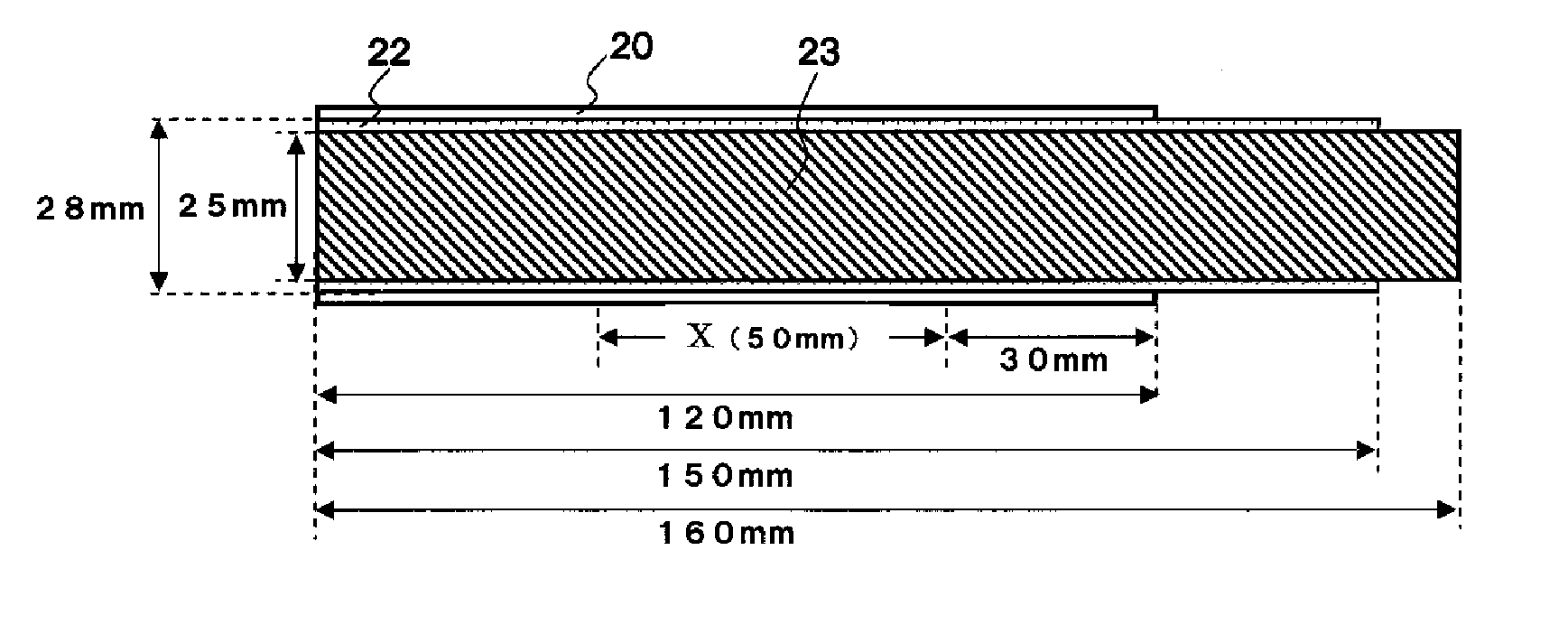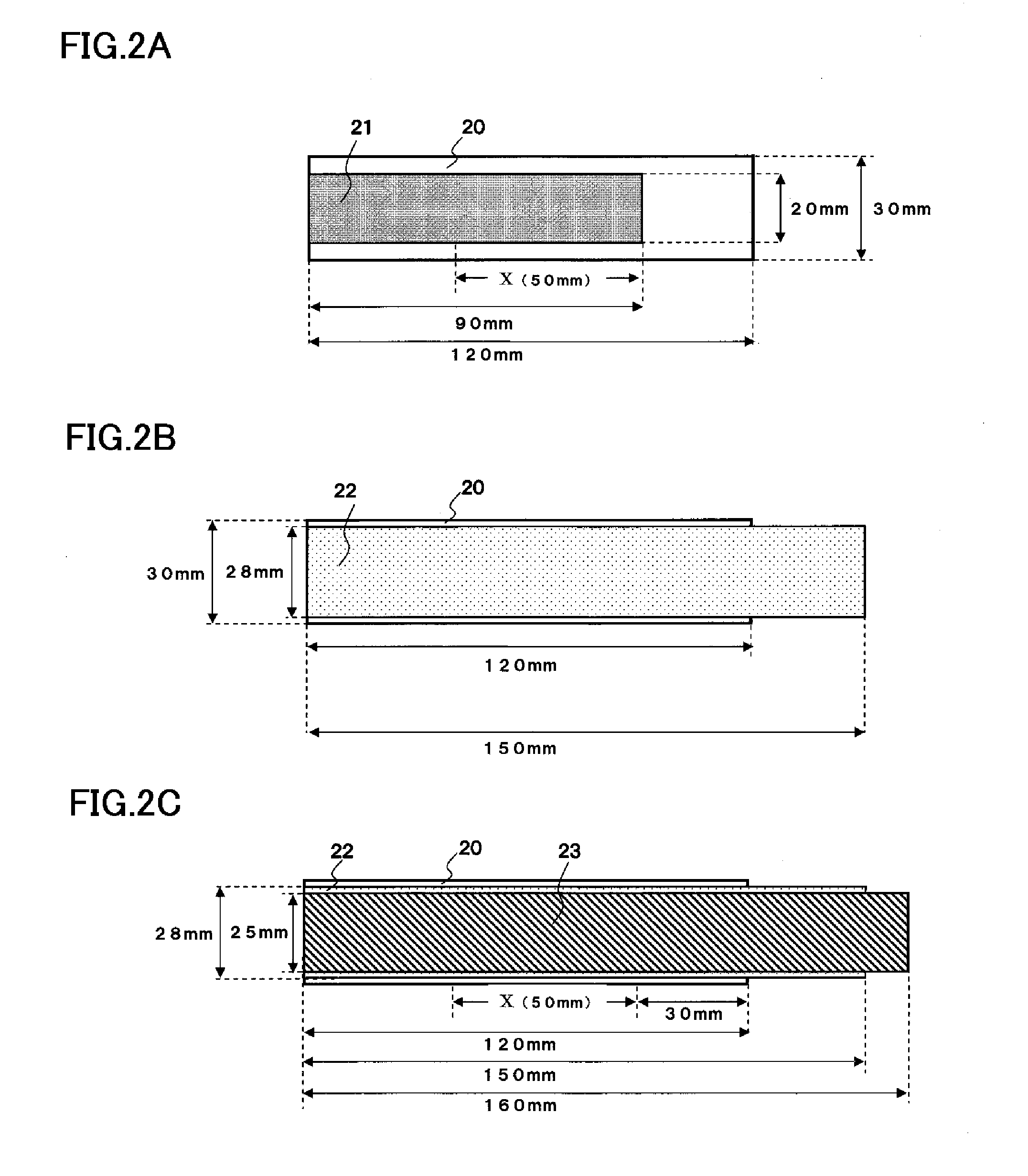Nonaqueous electrolyte secondary battery and method for manufacturing the same
a nonaqueous electrolyte and secondary battery technology, applied in the direction of cell components, final product manufacturing, sustainable manufacturing/processing, etc., can solve the problems of decline in the output characteristics or other characteristics of the nonaqueous electrolyte secondary battery that is obtained, decline in the formability of the electrode assembly, and decline in yield, so as to improve the production efficiency and increase the arithmetic mean surface roughness ra , the effect of high probability
- Summary
- Abstract
- Description
- Claims
- Application Information
AI Technical Summary
Benefits of technology
Problems solved by technology
Method used
Image
Examples
embodiment 1
Fabrication of Flattened Electrode Assembly
[0070]First, the positive electrode plate A and negative electrode plate A were prepared. The positive electrode plate A used was a 104.8-mm-wide, 3870-mm-long, 69 μm-thick strip, having at one end in the lengthwise direction a substrate exposed portion (width 15.2 mm) where the electrode active material mixture layer was not formed on either of the substrate surfaces. Also, the negative electrode plate A used was a 106.8-mm-wide, 4020-mm-long, 71 μm thick strip, having at one end in the lengthwise direction a substrate exposed portion (width 10.0 mm) where the electrode active material mixture layer was not formed on either of the substrate surfaces.
[0071]Next, three members, namely, the positive electrode plate A, negative electrode plate A and a separator (100-mm-wide, 4310-mm-long and 30 μm thick) constituted of microporous polyethylene membrane, were aligned and laid over one another in such a manner that the differing substrate expose...
embodiment 2
[0074]The flattened electrode assembly of the Embodiment 2 was fabricated in the same way as that in the Embodiment 1, except that the separator was disposed so that the face of the separator with 0.42 μm arithmetic mean surface roughness Ra contacted with the positive electrode plate A and the face with 0.46 μm arithmetic mean surface roughness Ra contacted with the negative electrode plate A.
embodiment 3
[0075]The flattened electrode assembly of the Embodiment 3 was fabricated in the same way as that in the Embodiment 1, except that the separator was disposed so that the face of the separator with 0.46 μm arithmetic mean surface roughness Ra contacted with the positive electrode plate A and the face with 0.42 μm arithmetic mean surface roughness Ra contacted with the negative electrode plate A.
[0076]Judgment of Electrode Assembly Formability
[0077]The formability of the flattened electrode assemblies fabricated in the Embodiments 1 to 3 and the Comparative Example 1 was judged from the thickness of the central portion of the flattened electrode assemblies (electrode assembly thickness).
[0078]The results of the investigation of the formability of the flattened electrode assemblies of the Embodiments 1 to 3 and the Comparative Example 1 are set forth in Table 3. The electrode assembly thicknesses in Table 3 for the electrode assemblies of the Embodiments 1 to 3 and the Comparative Exam...
PUM
| Property | Measurement | Unit |
|---|---|---|
| surface roughness | aaaaa | aaaaa |
| surface roughness Ra | aaaaa | aaaaa |
| arithmetic mean surface roughness | aaaaa | aaaaa |
Abstract
Description
Claims
Application Information
 Login to View More
Login to View More - R&D
- Intellectual Property
- Life Sciences
- Materials
- Tech Scout
- Unparalleled Data Quality
- Higher Quality Content
- 60% Fewer Hallucinations
Browse by: Latest US Patents, China's latest patents, Technical Efficacy Thesaurus, Application Domain, Technology Topic, Popular Technical Reports.
© 2025 PatSnap. All rights reserved.Legal|Privacy policy|Modern Slavery Act Transparency Statement|Sitemap|About US| Contact US: help@patsnap.com



